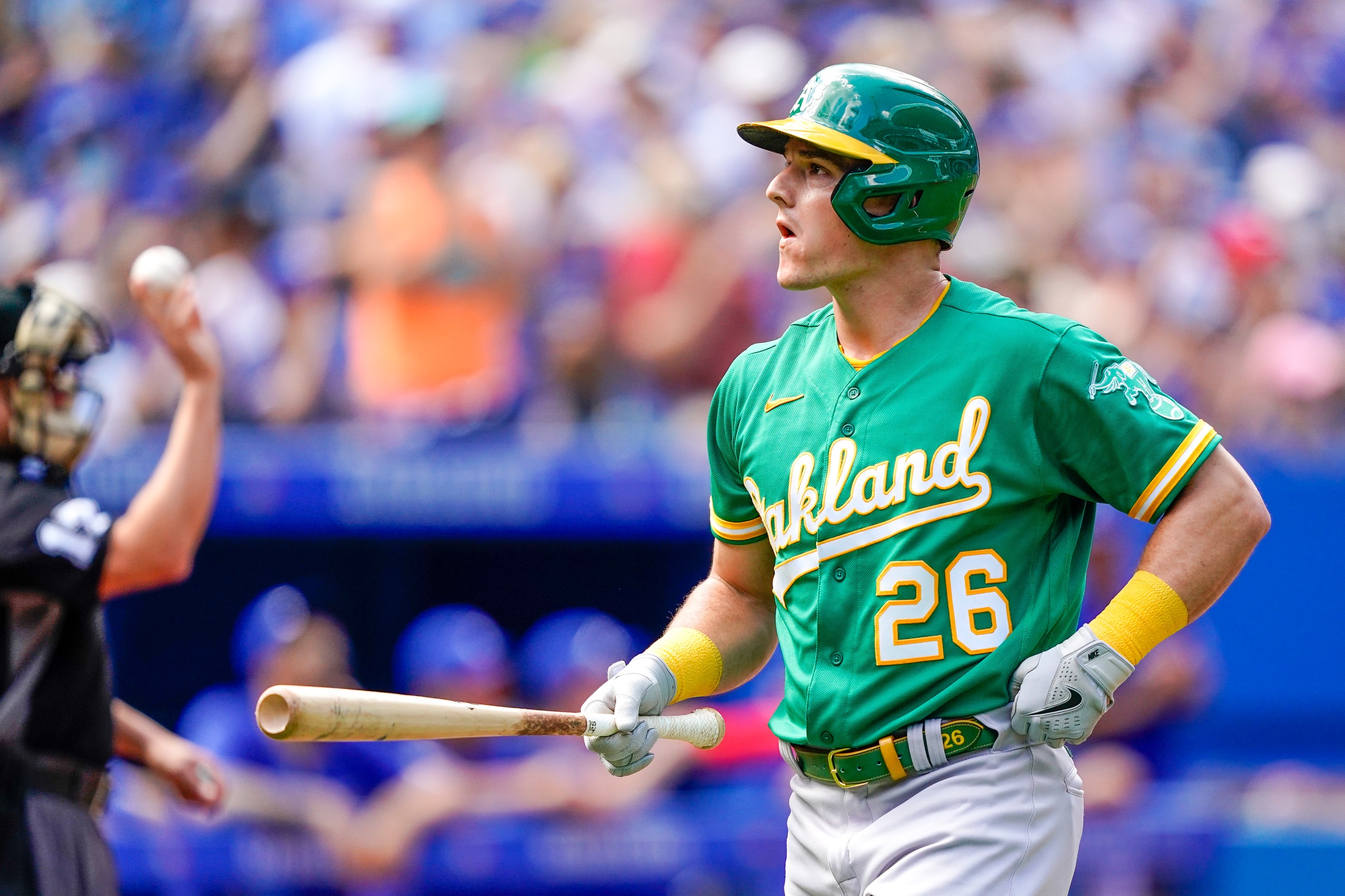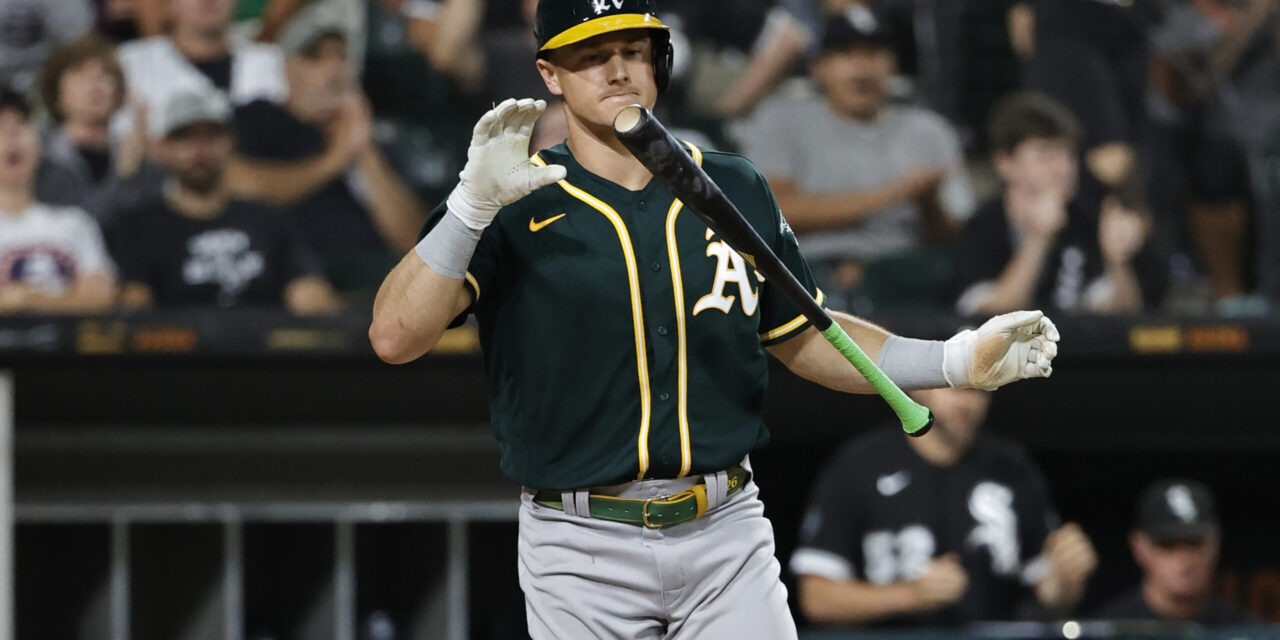
Credit: Kamil Krzaczynski-USA TODAY Sports
Over the last several seasons, locating a reliable third baseman has been a major area of concern for the New York Mets and while they’ve yet to effectively fill that position, this offseason might act as their best opportunity to accomplish that feat.
Along with a star-studded free-agent class of shortstops, this winter’s market also features a handful of high-profile third basemen, both in free agency and on the trade block. While the Mets will surely explore every available option, linking up with an organization like the Oakland Athletics could become a very real possibility in the near future.
Despite possessing one of the lowest payrolls – approximately $100.3 million – in the majors this past season, the Athletics are reportedly expected to turn over their roster during these next couple of months as they attempt to significantly cut costs. In turn, multiple all-star players are slated to become available via trades, including Matt Chapman.
With Chapman just two seasons away from becoming eligible for free agency, paired with his salary increasing through arbitration, it’s clear that the 28-year-old is starting to become too expensive for Oakland, meaning the time has likely come for both sides to part ways.
For a franchise like the Mets, there’s no question they could benefit from acquiring a superstar third baseman, who’s capable of providing extra-base power and elite defense. Based on his 27 home runs, 72 RBIs and career-best +17 OAA rating, which placed him in the 99th percentile, in 2021, he’d instantly transform the club’s hot corner into a reliable position.
On the other hand, since top prospects like Brett Baty or Mark Vientos would probably be included in a package sent to the Athletics, there could be a high level of risk involved regarding any trade discussions around Chapman. Though he’s viewed as one of the top players at his position, his underlying results may make this potential move even risker.

Photo Credit: Kevin Sousa-USA TODAY
Despite enjoying an impressive performance in the slugging department this past season, Chapman continued to separate himself from the quality all-around hitter he was previously in his career. Unlike from 2018-2019, the right-hander has acted as just a one-dimensional contributor since then, earning him a career-worst 101 wRC+ score through 622 plate appearances in 2021.
Reaching new levels of concern during his latest performance, the 2019 American League All-Star’s home run totals were largely overshadowed by his inability to generate a sizeable amount of contact – leading to an alarming number of swings and misses.
After displaying flashes of these struggles throughout the shortened 2020 campaign, resulting in a 35.5% strikeout rate and a 36.2% whiff rate, Chapman remained on this troubling path and expanded on his bat-to-ball woes in the following season. As a result, he ended up posting the second-highest strikeout rate (32.5%) among all qualified third basemen, according to FanGraphs.com.
In addition, the former first-round selection also recorded a miserable 32.7% whiff rate, which ranked in the eighth percentile of the entire major leagues.
Even though Chapman isn’t prone to chasing outside the strike zone, as he produced a 22.9% chase rate in 2021, the majority of his swings and misses have been located within the zone as of late. As a result, the right-handed slugger witnessed his in-zone whiff rate climb to 27.6 percent this past season – an increase of 8.6 percent from ’19.
Unless the California State standout begins making considerably more contact inside the zone, especially against fastballs, chances are this area will continue to serve as a major weakness in future seasons. If that indeed proves to be true, then his strikeout totals are only likely to increase moving forward, potentially causing him to become an even larger liability as he inches closer to age-30.
Thanks to these swing-and-miss woes, similar to his plate discipline results, Chapman’s contact metrics also took a dramatic nosedive during his fifth campaign in the majors. While that’s never been considered a critical aspect of his craft, it’s something that was directly impacted by his inability to put balls in play consistently.
Proving to be a significant liability in this category, the former top prospect generated career-worsts in AVG (.210), xAVG (.207) and also finished with the second-lowest BABIP (.272) – created a .270 BABIP in ’19 – of his major league career.
In comparison, this disappointing showing saw him finish with the third-lowest xAVG, tied for the fourth-lowest AVG and with the 12th-lowest BABIP among all third basemen in the majors who earned at least 300 plate appearances.
Like with most hitters, Chapman has experienced his highs and lows throughout his five seasons in the majors, but what changed in 2021, was how long his hitting slumps lasted.
Prior to this past season, the California native would fall into brief dry spells at the plate, which would see his rolling xAVG drop slightly below the major league average line. But recently, due to his lack of consistent contact, his offensive struggles extended far beyond their usual length and also reached new levels of concern, too.

Source: BaseballSavant.com
To simplify this chart, in short, Chapman largely performed as a below-average hitter when he wasn’t hitting for extra bases in 2021 – that’s extremely problematic for someone who’s considered a middle-of-the-order weapon.
Taking these troubling factors into account, despite his encouraging 12.9% walk recent from a season ago, it remains to be seen if the talented third baseman will be able to sustain his current slugging metrics long-term given how much he struggles to create contact. Furthermore, based on his latest offensive results, adding the righty to New York’s lineup wouldn’t significantly move the needle forward from an overall standpoint.
If Chapman continues down this trajectory, even with his stellar defensive metrics, his unreliable offensive tendencies could potentially complicate any contract negotiations when that time comes around. Is that a situation the Mets want to put themselves in? Probably not.
With this in mind, it’d be wise to operate very cautiously while pursuing any sort of trade surrounding the three-time Gold Glove Award winner. There’s no question he’d be an improvement over the group that maintained the hot corner in Queens this past season, in saying that, acquiring him also might not permanently address this dire issue.
Considering fellow third basemen like Jose Ramirez, Kris Bryant and Kyle Seager could each be attainable for this organization, choosing to circle back on Chapman, later on, might be the best course of action to take this winter.
















